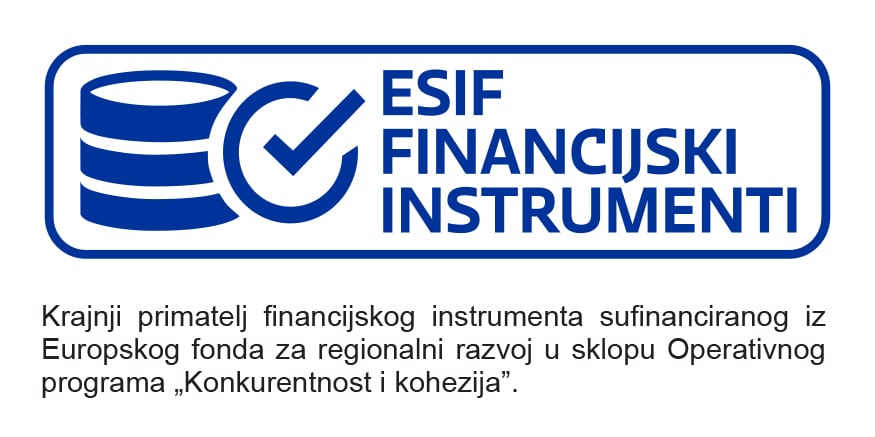Configuration #
After you have successfully installed the application, you should configure Data Transfer module.
- Open M-Files Admin
- In the left-side tree view, expand the desired connection to M-Files Server.
- In the left-side tree view, expand the Document Vaults
- Still in the left-side tree view, expand the vault where you installed the connector and select Configurations.
- Expand Other Applications
- Expand Extension Kit
- Click on Data Tranfer
| Field | Value | Description |
|---|---|---|
| Enabled | Yes/No | Specifies whether the module is in use. |
| Configuration Mode | Simple/Advanced | Display basic or advanced configuration options for module. |
| Rule Groups> Group | ||
| Name | Text | Specifies group name. |
| Rule Groups>Group>Rule | ||
| Name | Text | Custom rule name. |
| Alias | Text | Unique rule alias. |
| Description | Text | Optional rule description. |
| Enabled | Yes/No | Specifies whether the rule is in use. |
| Configuration mode | Simple/Advanced | Display simple or advanced configuration options for rule. |
| Trigger type | One of the following: • Object created • Object changed • Object entered state • Object ChangedState • RunOnce • Scheduled • OnComment • Object deleted • Orchestrated | Type of event that triggers the execution of this rule. Object created. If this option is selected, rule will be executed on creation of source object. Object entered state. If this option is selected, rule will be executed when source object changes workflow state. Object changed. If this option is selected, rule will be executed when any change is made on source object. Run once. If this option is selected, rule will be run only once and on all matching objects in vault. NOTE: On vault restart, all enabled rules with Run once trigger will be run immediately. Scheduled. If this option is selected, rule will be run on inserted time. On comment. If this option is selected, rule will run whenever a comment is added to the source object. |
| Rule Groups>Group>Rule>Monitored properties | ||
| Property definition | Property definition | Optional filter by properties on source object whose change triggers rule execution. |
| Monitor property | One of the following: AnyChange WithCondition | Controls how property will be monitored. Any change. All changes will be monitored and rule will be triggered on any property change. With condition. Rule will be triggered on property change only if specified condition is satisfied |
| Rule Groups>Group>Rule>Trigger source | ||
| Object Type | List of object types | Object type of source object. |
| Class | List of classes | Class of source object. |
| Workflow | List of workflows | Workflow of source object. |
| State | List of workflow states | Workflow state of source object. Note! You must also enter the workflow above if you have entered a state. |
| Rule Groups>Group>Rule>Trigger source> Search filters [n] | ||
| SearchCondition | Search conditions | Optional additional conditions that source object needs to satisfy. Conditions inside a single filter are combined with AND, while multiple filters are combined with OR operator. |
| Look in | One of the following: • Latest obj version • All obj versions | When trying to match the above source conditions, look in all object versions, or only the latest one. Latest obj version. If this option is selected, the current object version must match the specified conditions for object to be treated as source for this rule. All obj versions. If this option is selected, any object version must match the specified conditions for object to be treated as source for this rule. |
| Rule Groups>Group>Rule>Mode | ||
| Mode | One of the following: Import Export | Data transfer mode. |
| Rule Groups>Group>Rule>Import settings | ||
| Transport type | One of the following: FileShare Sftp | Transport type. FileShare – use for transferring data to and from local disk, local or network shared disks. Sftp – use for transferring data to and from sftp servers. |
| Folder path | Text | Full path to folder data will be imported from. |
| Import type | One of the following: Files FilesAndMetadata Metadata | Controls what data will be imported. |
| Import folder structure | One of the following: Hierarchy Flat | Structure of folder that data will be imported from. Hierarchy – all files and metadata for each object import will be stored in a single folder. Flat – all files and metadata for import of all objects will be stored in a single folder and each file can have prefix denoting the object it belongs to. |
| Unique prefix regex expression | Regex expression | Regex expression that file or folder that are being imported must match. This regex expression is used to identify files belonging to the same object for import. |
| Prefix-filename separator | Text | Separator used to separate filename prefix (matched with Unique prefix regex expression) and the actual filename of a file being imported. This value is also used in metadata filename (__metadata.json). |
| Imported object type | List of object types | Imported object type. |
| Imported object class | List of classes | Imported object class. |
| File update behavior | AppendAndReplace DoNotUpdate Append Overwrite | If object exists in M-Files, controls file update behavior. DoNotUpdate: Does not modify object files. AppendAndReplace: Appends all files to object, replacing any existing file on object that has the same filename as any of the import files. Overwrite: Removes all files on existing M-Files object and adds import files. |
| Delete file after import | Yes/No | Whether to delete file after import. |
| Duplicates detection | Yes/No | Whether to check for duplicates when importing objects. |
| Rule Groups>Group>Rule>Import settings>FileShare setting | ||
| Domain | Text | Domain name |
| Username | Text | Username |
| Password | Text | Password |
| Rule Groups>Group>Rule>Import settings>Sftp settings | ||
| Host | Text | Host name |
| Port | Integer | Port |
| Username | Text | Username |
| Password | Text | Password |
| Rule Groups>Group>Rule>Import settings>File attribute properties [n] | ||
| File attribute | One of the following: HostName FilePath FilePathRegex Filename FilenameRegex ImportPrefix | File attribute to set as object property |
| Regex pattern | Regex expression | Displayed only if FilePathRegex or Filename Regex are selected for file attribute. Regex pattern to use. |
| Object property | Property definition | Object property to set. |
| Rule Groups>Group>Rule>Import settings>Static object properties [n] | ||
| Property | Property definition | |
| Rule Groups>Group>Rule>Import settings>Static object properties [n]>Value | ||
| Mode | One of the following: No action Static value Empty value | Which type of value to set. |
| Rule Groups>Group>Rule>Import settings>Object mapping rules | ||
| Mapping behavior | One of the following: KeepOnlyMappedProperties KeepAllProperties | Controls mapping behavior. |
| Target object type | List of object types. | Target object type. |
| Target object class | List of classes | Target object class. |
| Rule Groups>Group>Rule>Import settings>Object mapping rules>Source object type | ||
| Alias | Text | Source object type alias. |
| Guid | Text | Source object type guid. |
| Id | Text | Source object type id. |
| Name | Text | Source object type name. |
| Rule Groups>Group>Rule>Import settings>Object mapping rules>Source object class | ||
| Alias | Text | Source class alias. |
| Guid | Text | Source class guid. |
| Id | Text | Source class id. |
| Name | Text | Source class name. |
| Rule Groups>Group>Rule>Import settings>Object mapping rules>Properties [n] > Property mapping [n] | ||
| Alias | Text | Target property alias. |
| Guid | Text | Target property guid. |
| Id | Text | Target property id. |
| Name | Text | Target property name. |
| Target | Property definition | Target property. |
| Rule Groups>Group>Rule>Import settings>Object mapping rules>Properties [n] > Value list mapping rule [n]>Source value list | ||
| Alias | Text | Source value list alias. |
| Guid | Text | Source value list guid. |
| Id | Text | Source value list id. |
| Name | Text | Source value list name. |
| Target value list | List of value lists. | Target value list. |
| Rule Groups>Group>Rule>Export settings | ||
| Transport type | One of the following: FileShare Sftp | Transport type. FileShare. Use for transferring data to and from local disk, local or network shared disks. Sftp. Use for transferring data to and from sftp servers. |
| Folderpath | Text | Full to folder data will be exported to. |
| Overwrite | Yes/No | Overwrite any existing files. |
| Export type | One of the following: FileAndMetadata Files Metadata | Controls what data will be exported. |
| Export folder structure | One of the following: Hierarchy Flat | Structure of folder that data will be exported to. Hierarchy. Both files and metadata for each exported object will be stored in a single folder, named after object, like in the following example (for document with ID 1, version 2): export(0-1-2)__metadata.json export(0-1-2)file.docx Flat. All files and metadata for all exported objects will be stored in a single folder and each file (both metadata and actual file) will have prefix denoting the object it belongs to, like in the following example (for document with ID 1, version 2): export(0-1-2)__metadata.json export(0-1-2)__file.docx |
| Unique prefix expression for export | String | Expression that uniquely denotes object that is being exported. This expression will be used as folder name in Hierarchy export and as filename prefix in Flat export. Default value of %OBJVERSTR%, when used in combination with Hierarchy export will result in files (and metadata) from object being exported to folder named (TYPEID-OBJECTID-VERSION), and when used in combination with Flat export folder structure, files (and metadata) from object will have (TYPEID-OBJECTID-VERSION) prefix. |
| Prefix-filename separator | Text | Separator used to separate Unique prefix expression for export and the actual filename of a file being exported. Also used in exported metadata filename (__metadata.json). |
| Delete after export | Yes/No | Whether to delete or destroy object after successful export. |
| Rule Groups>Group>Rule>Export settings>Objects to export>Status field condition | ||
| Field | One of following: ID ExternalID Type Version Deleted | Status field. |
| Operator | One of following: = != > < >= <= | Operator to apply in comparison of actual and expected property value |
| Rule Groups>Group>Rule>Export settings>Objects to export>Status field condition > Value type | ||
| Value type | One of the following: Static FromSource Dynamic | Value type. |
| Value | Value | Status field value. |
| Rule Groups>Group>Rule>Advanced settings | ||
| Search timeout (sec) | Integer | Search timeout in seconds. Value should always be between 1 and 90 seconds. This timeout is applied to any search executed inside operation (eq. any configured Vault Search, or retrieval of indirectly referenced objects). |
| Bussines critical | Yes/No | If set to true, rule will be logged in SEQ. |
Use Case #
Import Incoming Invoices from a shared folder #
Customer use M-files to track and store invoices, purchase orders, and other business and financial documents. Incoming invoices are usually scanned and saved to a shared folder on the server. The customer wants to import automatically files in M-Files.
Configuration #







